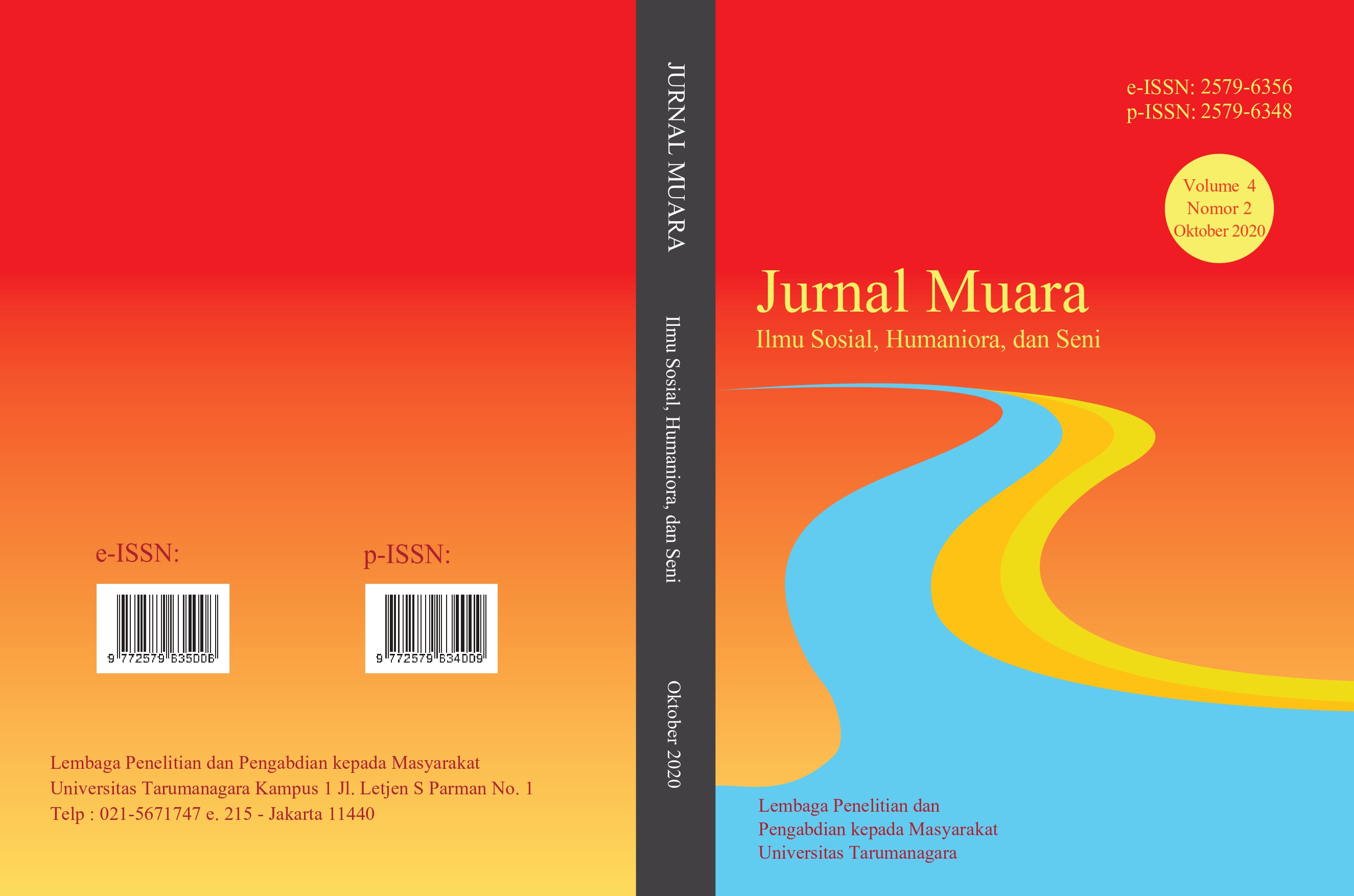GAMBARAN KECEMASAN EVALUATIF PADA MAHASISWA
Main Article Content
Abstract
Test anxiety is a set of cognitive, behavioral, and physiological responses which are followed by concerns about the possible negative outcomes of failure on the test or similar evaluative conditions. Excessive degree of test anxiety can result in negative impacts including poor school performance, poor examination performance, mental distress, cognitive impairment, and poor health. This study was aimed to find out test anxiety level experience by college students. This study uses quantitative approach with 207 students from one of private univerity in Jakarta. Data was collected using the Test Anxiety Inventory. The results showed that from 207 participants, there were 119 (57%) students with low test anxiety levels, 85 (41%) students with moderate test anxiety levels, 3 (1%) students with high test anxiety levels.
Test anxiety atau kecemasan evaluatif adalah kumpulan dari respon perilaku, kognitif, dan fisiologis yang disertai dengan kehawatiran akan kemungkinan konsekuensi negatif dari kegagalan pada tes atau situasi evaluatisf yang serupa. Kecemasan evaluatif yang tinggi dapat berdampak negatif bagi penyandangnya seperti misalnya prestasi sekolah yang rendah, performa tes yang buruk, gangguan kognitif, kesehatan yang buruk dan tekanan psikologis. Tujuan penelitian ini adalah untuk mengetahui gambaran kecemasan evaluatif pada mahasiswa. Penelitian ini menggunakan pendekatan kuantitatif pada 207 mahasiswa universitas swasta X di Jakarta. Pengukuran kecemasan evaluatif menggunakan Test Anxiety Inventory. Hasil penelitian menunjukkan bahwa dari 207 partisipan, terdapat 119 (57%) mahasiswa dengan tingkat kecemasan evaluatif rendah, 85 (41%) mahasiswa dengan tingkat kecemasan evaluatif sedang, 3 (1%) mahasiswa dengan tingkat kecemasan evaluatif tinggi
Article Details
References
Arnett, J. J. (2015). Emerging adulthood: The winding road from the late teens through the twenties (2nd ed.). New York, NY, US: Oxford University Press.
de Lijster, J. M., Dierckx, B., Utens, E. M., Verhulst, F. C., Zieldorff, C., Dieleman, G. C., & Legerstee, J. S. (2017). The age of onset of anxiety disorders: a meta-analysis. Canadian Journal of Psychiatry. Revue Canadienne de Psychiatrie, 62(4), 237.
DordiNejad, F. G., Hakimi, H., Ashouri, M., Dehghani, M., Zeinali, Z., Daghighi, M. S., & Bahrami, N. (2011). On the relationship between test anxiety and academic performance. Procedia-Social and Behavioral Sciences, 15, 3774-3778.
Grupe, D. W., & Nitschke, J. B. (2013). Uncertainty and anticipation in anxiety: an integrated neurobiological and psychological perspective. Nature Reviews Neuroscience, 14(7), 488. doi:10.1038/nrn3524.
Guraya, S. Y., Guraya, S. S., Habib, F., AlQuiliti, K. W., & Khoshhal, K. I. (2018). Medical students perception of test anxiety triggered by different assessment modalities. Medical teacher, 1-7. https://doi.org/10.1080/0142159X.2018.1465178
Hanh, H., Kropp, P., Kirschstein, T., Rücker, G., & Müller-Hilke, B. (2017). Test anxiety in medical school is unrelated to academic performance but correlates with an effort/reward imbalance. PloS one, 12(2), e0171220.
Haidar, S. A., De Vries, N. K., Karavetian, M., & El-Rassi, R. (2018). Stress, anxiety, and weight gain among university and college students: a systematic review. Journal of the Academy of Nutrition and Dietetics, 118(2), 261-274.
Helsley, J. D., & Vanin, J. R. (2008). Anxiety disorders a pocket guide for primary care. Humana Press.
January, J., Madhombiro, M., Chipamaunga, S., Ray, S., Chingono, A., & Abas, M. (2018). Prevalence of depression and anxiety among undergraduate university students in low-and middle-income countries: a systematic review protocol.
Systematic reviews, 7(1), 57. https://doi.org/10.1186/s13643-018-0723-8
Javanbakht, N., & Hadian, M. (2014). The effects of test anxiety on learners’ reading test performance. Procedia-Social and Behavioral Sciences, 98, 775-783. doi:10.1016/j.sbspro.2014.03.481
Kementrian Kesehatan Republik Indonesia. (2016, Oktober). Peran keluarga dukung kesehatan jiwa masyarakat. http://www.depkes.go.id/article/print/16100700005/peran-keluarga-dukung-kesehatan-jiwa-masyarakat.html
Kementrian Kesehatan Republik Indonesia. (2018). Hasil utama riskesdas 2018. http://www.depkes.go.id/resources/download/info-terkini/materi_rakorpop_2018/Hasil%20Riskesdas%202018.pdf
Papalia D. E. & Feldman, R. D., Martorell, G. (2012). Experience human development. New York, NY: Mc-Graw-Hill.
Pedrelli, P., Nyer, M., Yeung, A., Zulauf, C., & Wilens, T. (2015). College students: mental health problems and treatment considerations. Academic Psychiatry, 39(5), 503-511.
Pekrun, R., & Stephens, E. J. (2015). Test anxiety and academic achievement. In International Encyclopedia of the Social & Behavioral Sciences (2nd ed, 244-249) https://doi.org/10.1016/B978-0-08-097086-8.26064-9
Putwain, D.W., Woods, K.A. & Symes, W. (2010). Personal and situational predictors of test anxiety of students in post-compulsory education. British Journal of Educational Psychology, 80, 137-160.
Ritchie, H. & Roser, M. (2018, April). Mental health. Our World in Data. https://ourworldindata.org/mental-health#prevalence-of-mental-health-and-substance-use-disorders
Tavakoli, N., Broyles, A., Reid, E. K., Sandoval, J. R., & Correa-Fernández, V. (2018). Psychological inflexibility as it relates to stress, worry, generalized anxiety, and somatization in an ethnically diverse sample of college students. Journal of Contextual Behavioral Science.
Weiner, I. B., & Craighead, W. E. (2010). The Corsini encyclopedia of psychology (Vol. 4). John Wiley & Sons.
Zeidner, M. (1998). Test anxiety: The state of the art. Springer Science & Business Media.



